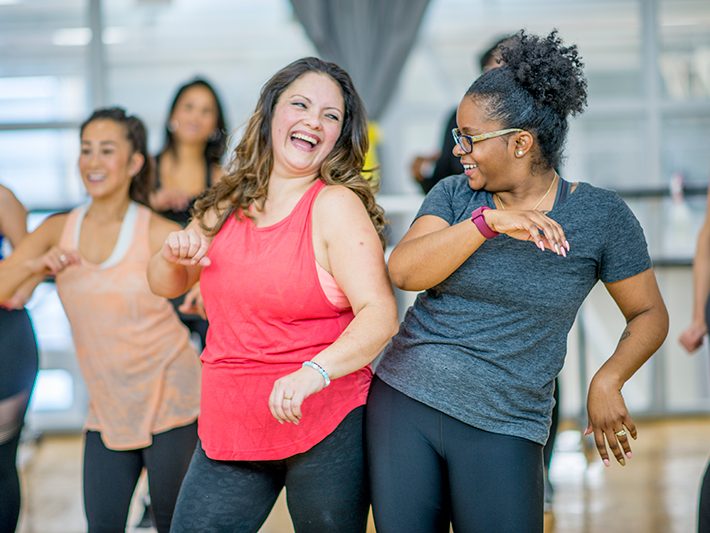
Physical activity guidelines
There are physical activity guidelines covering all ages published by the UK Chief Medical Officer.
These guidelines focus on being active every day and give the recommended minimum levels of activity for each age group.

There are physical activity guidelines covering all ages published by the UK Chief Medical Officer.
These guidelines focus on being active every day and give the recommended minimum levels of activity for each age group.
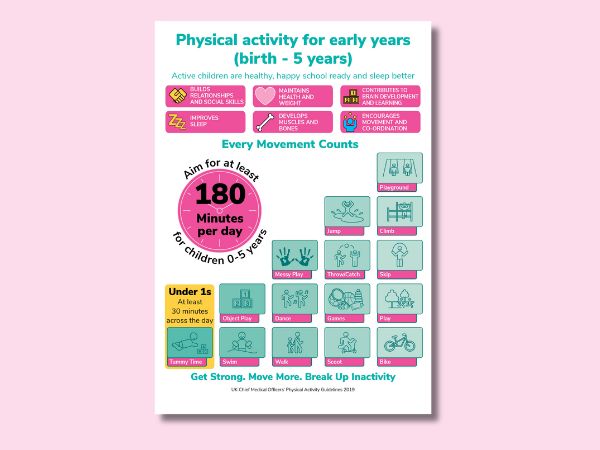
Under 1 year:
Children under 1 should aim to be active for at least 30 minutes across the day, including interactive floor-based activity, e.g. crawling.
For infants who are not yet mobile, this should include at least 30 minutes of tummy time spread throughout the day while awake. This should include other movements such as reaching and grasping, pushing and pulling themselves independently, or rolling over. Tummy time may be unfamiliar to babies at first, but can be increased gradually, starting from a minute or two at a time, as the baby becomes used to it. Babies should not sleep on their tummies.
Children aged 1-5 years:
Aim for at least 180 minutes (3 hours) a day with activities such as playgrounds, jumping, climbing, messy play, throwing and catching, skipping, object play, dancing, games, playing, swimming, walking, using a scooter, riding a bike. Active children are healthy, happy, school-ready and sleep better.
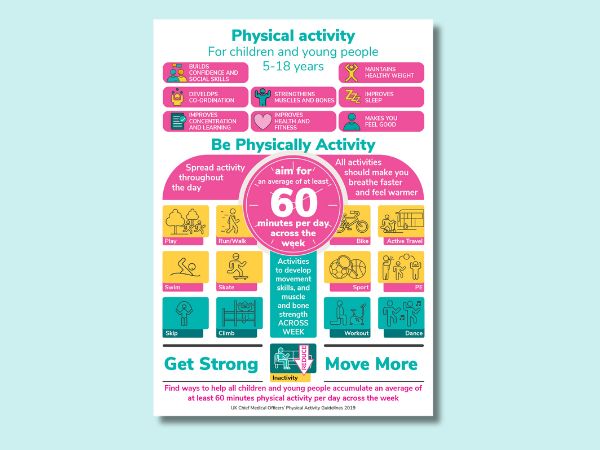
Children and young people aged 5 to 18 need to do at least 60 minutes of physical activity every day, spread throughout the day. This should range from moderate activity, such as cycling and playground activities, to vigorous activity, such as running and ball games. Three times a week, activities should include exercises for strong muscles and bones, such as swinging on playground equipment, hopping and skipping, gymnastics and other sports.
Children and young people should reduce the time they spend sitting for long periods of time, including watching TV, playing computer games and travelling by car when they could walk or cycle.
Active children are healthy, happy, school-ready and sleep better.
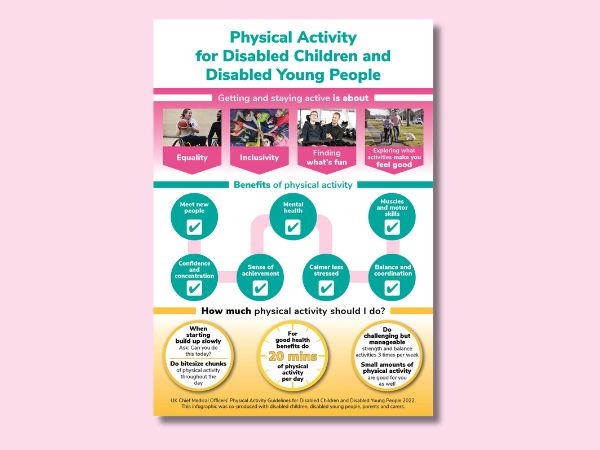
Getting and staying active is about:
Equality, inclusivity, finding what’s fun and exploring what activities make you feel good
Benefits of physical activity:
Meeting new people, gaining confidence, concentration and a sense of achievement. It helps with mental health, being calmer and less stressed. It improves balance, coordination, muscle strength and motor skills.
For good health benefits, do 20 minutes of physical activity per day. When starting, build up slowly. Ask: can you do this today? Do bitesize chunks of physical activity throughout the day.
Do challenging but manageable strength and balance activities 3 times per week. Small amounts of physical activity are good for you as well.
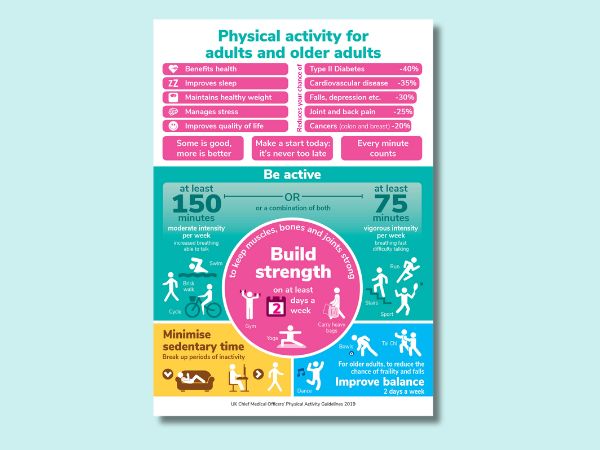
Adults should try to be active every day with a variety of different activities. They should include strength exercises on two or more days a week that work all the major muscles (legs, hips, back, abdomen, chest, shoulders and arms).
Aim to do:
At least 150 minutes of moderate aerobic activity e.g. cycling or brisk walking every week. Or 75 minutes of vigorous aerobic activity such as running or fitness classes. Or a mix of moderate and vigorous aerobic activities e.g. two 30 minute runs plus 30 minutes of brisk walking which would equal 150 minutes of moderate aerobic activity.
A good rule is that one minute of vigorous activity provides the same health benefits as two minutes of moderate activity. One way to do your recommended 150 minutes of weekly physical activity is to do 30 minutes five days every week. All adults should also break up long periods of sitting with light activity.
Adults aged 65 or older who are generally fit and have no health conditions that limit their mobility should try to be active daily.
They should include strength exercises on two or more days a week that work all the major muscles (legs, hips, back, abdomen, chest, shoulders and arms).
Aim to do:
At least 150 minutes of moderate aerobic activity such as cycling or walking every week. Or 75 minutes of vigorous aerobic activity such as running or a game of singles tennis every week. Or a mix of moderate and vigorous aerobic activity every week (for example, two 30-minute runs plus 30 minutes of brisk walking equates to 150 minutes of moderate aerobic activity)
A general rule of thumb is that one minute of vigorous activity provides the same health benefits as two minutes of moderate activity.
More information can be found here
You should also try to break up long periods of sitting with light activity, as sedentary behaviour is now considered an independent risk factor for ill health, no matter how much exercise you do.